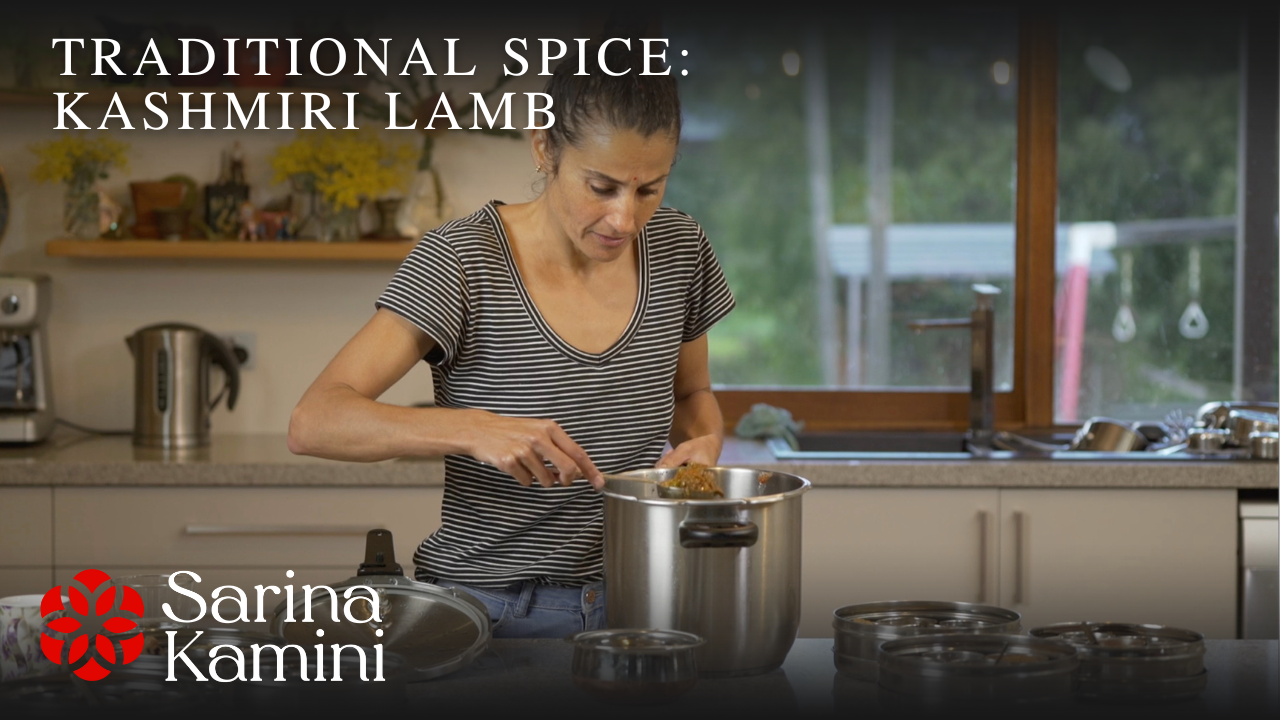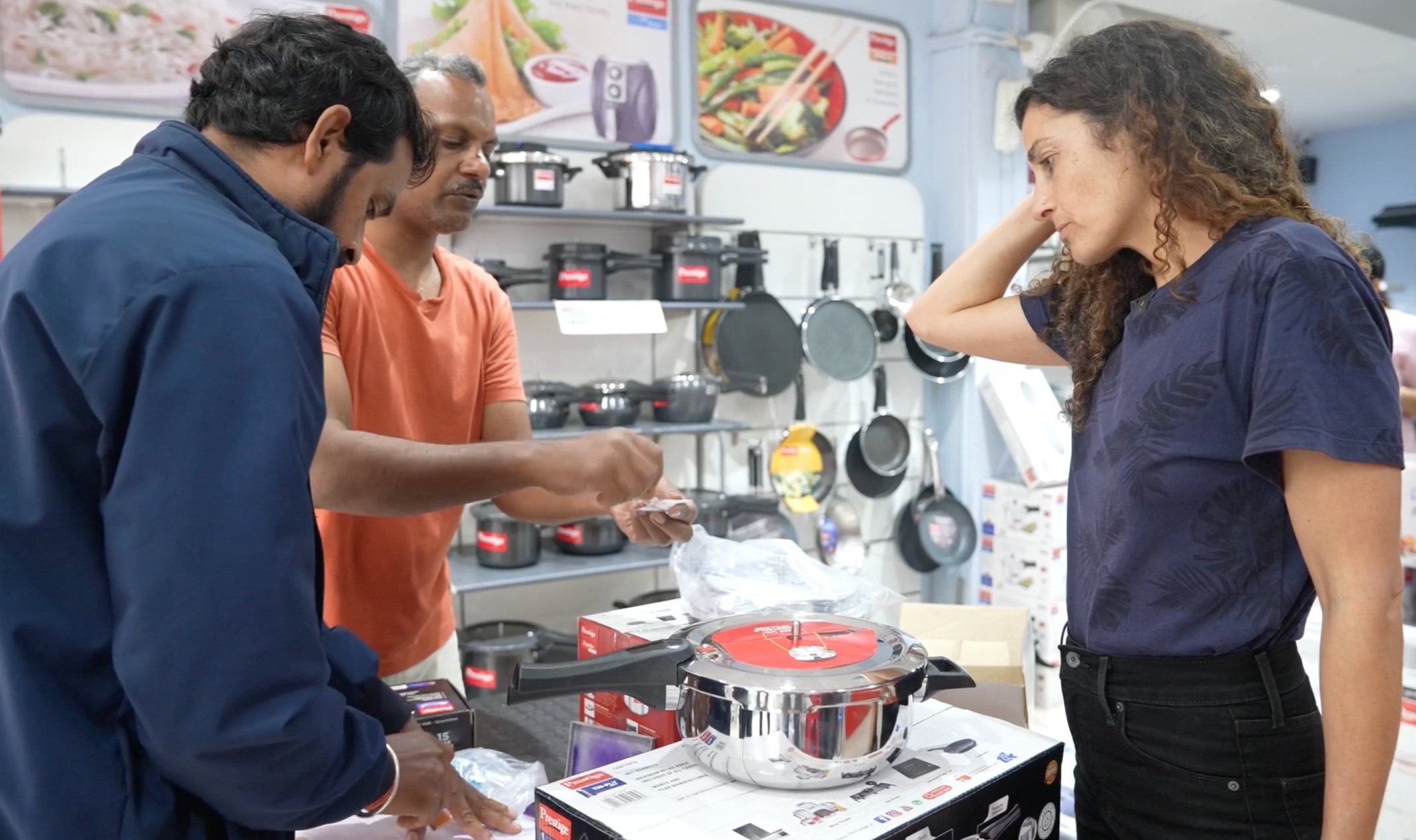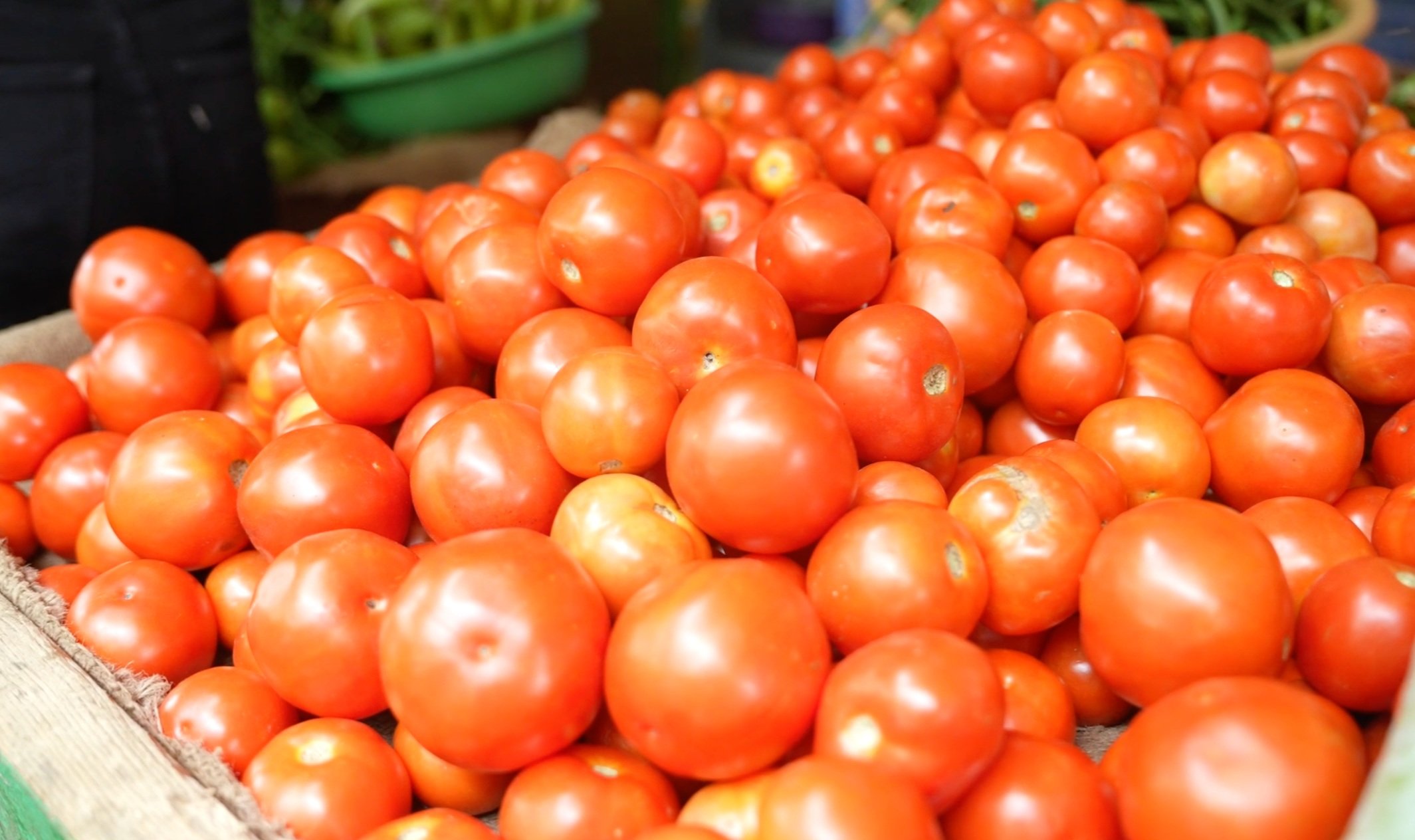LAMB AND PEA CURRY
LAMB AND PEA CURRY

DAD’S KASHMIRI LAMB AND PEA CURRY IS MY FAVOURITE.
The peas gives this traditional Kashmiri lamb curry recipe a lovely sweetness. Dad made it beautifully when we were kids. I use whey during the browning and the pressure cooking to make it a little richer and softer than his version.
Learn more about traditional Kashmiri lamb curry >
RECIPE DETAILS
Serves: 4 as part of an Indian meal.
Cooking time: 90 minutes (including mutton cooling time).
Dietary Style: Gluten Free.
INGREDIENTS
FOR THE BROWNING
- 1 kg lamb shoulder, cut into 2 inch chunks
- 1/3 cup mustard oil
- 4 tbsp yoghurt
- 1 tsp fine white salt
- 1 cinnamon quill
- 3 dried bay leaf
- 2 cardamom pods, cracked
- pinch asafoetida
THE BROWNING LIQUID
- 2 cups whey
- 1 tbsp yoghurt
- 1/2 tsp fine white salt
- 1/2 tsp hot ground red chilli
- 1/3 tsp fenugreek powder
PRODUCE PREP
- 2 cups peas, parboiled
- 3 tomatoes, diced
MAIN MASALA
- 1/3 tsp fine pink salt
- 2 tsp fennel powder
- 1/2 tsp turmeric powder
- 1 tsp ginger powder
- 1/2 tsp Kashmiri chilli powder
- 2 1/2 tsp cumin seed
- 1 tsp fennel seed
- 1 tsp nigella seed
- 1/2 tsp cumin powder
- 1/4 cup passata
- a pinch of white pepper
- 2 pinches of fine white salt
- large pinch of caster sugar
- enough whey to almost cover the produce
METHOD
How to make our Kashmiri lamb and pea curry .
STEP 1
In a heavy bottomed pot or cast iron kadai heat the mustard oil and the yoghurt, adding the teaspoon of fine white salt, cinnamon quill, bay leaf, cardamom pods, and a pinch of asafoetida.
Stir the oil, yoghurt and spice mix as it heats. The stovetop should be on high. You want the fats to get very hot and to start to split. Stir continuously so the spice doesn't settle and burn.
STEP 2
Once the mix splits and the milk solids in the yoghurt begin to coagulate, add the chunky lamb pieces and keep stirring on high heat. This is the beginning of the browning process. Stand to attention at the stove and keep stirring the meat as it begins to stick and caramelise.
While this process is occurring, take a few minutes to make your browning mix: in a measuring cup mix two cups of whey, with 1 tablespoon of yoghurt, the half teaspoon of fine white salt, a half teaspoon of a hot ground red chilli, a pinch of asafoetida, and the fenugreek powder.
Use the whey and spice mix to continue browning the meat. This is a complex description and is best understood by watching the video recipe between minutes seven and 12. This five minute section covers in minute detail the visual steps behind the browning process, when to add in the whey mix, and the reason this process is so important.
Once the lamb is browned, set aside.
STEP 3
Boil your peas a few minutes on the stove until cooked. Drain and set aside.
Prepare the rest of your dried spices in a katori or small bowl. This includes the the fine pink salt, fennel powder, fennel seed, cumin seed, nigella seed, ginger powder, turmeric powder, Kashmiri chilli powder, cumin powder. Take this masala, along with a 1/4 cup of passata, and the cooked peas to the stovetop.
Finely dice three fresh tomatoes and take them to the stovetop with your other ingredients.
STEP 4
Transfer the browned lamb to a pressure cooker. Add the peas, the masala, the passatta, the pinches of salt, white pepper, and fenugreek powder, the fresh tomatoes, any left over browning liquid, and enough whey to almost cover the produce in the pressure cooker.
Set the pressure cooker to high heat and wait until it blows two whistles. Once this occurs, turn the pressure cooker down to a medium-low heat and continue cooking for around 15 or 20 minutes—the exact length of time will depend upon the personality of your pressure cooker. Once cooked, let the pressure cooker de-pressurise on its own. This could take up to a further 20 minutes.
STEP 5
Once the lid is removed, if there is a little too much liquid, you can simmer the lamb on a low heat until a little more of the gravy has evaporated and thickened. Serve hot with chapatti, rice and dal. My favourite meal of all time.
LEARN MORE ABOUT
KASHMIRI LAMB CURRIES
What is special about Kashmiri Hindu food?
Kashmiri Hindu food is as complex, beautiful, and rich as the Kashmiri landscape. The region is framed by the Himalayas and is made up of mountains and valleys. We use masala that is earthy and warm. We do not use garlic and onion.
What is Kashmiri food?
Kashmiri food is food that finds its origin in the region of Kashmir in the far north of India. Each ethnic group in Kashmir has different food traditions. I write on the food of my family in the Kashmiri Hindu tradition.
Why do Kashmiri Hindus eat lamb?
Traditionally chicken was viewed as an unclean meat by many Kashmiri Hindus. As Hindus we don’t eat beef—it is taboo. Fish from the lakes of Kashmir is on the menu. Lamb, or mutton traditionally, is then the prime red meat protein.
What are the influences on Kashmiri Hindu food?
The trade routes and ancient nature of the regions of India and its surrounds means that there has been influences from Persia (the Mughlai) on Kashmiri Hindu cuisine, as well as some cross-pollination from the cuisine of Kashmiri Muslims.



